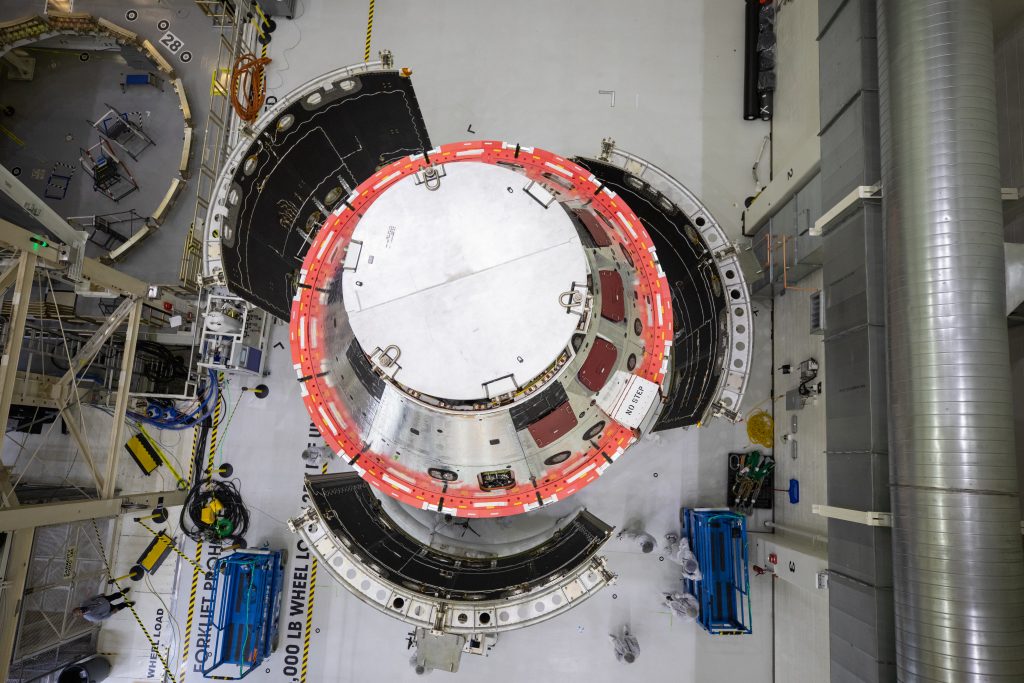Technicians have finished encapsulating the European Service Module for NASA’s Orion spacecraft that will travel around the Moon on the first Artemis mission.
Like most spacecraft Orion will be launched inside protective fairings on top of its Space Launch System rocket. The spacecraft adapter jettison fairings have now been installed that protect the European Service Module during launch and are ejected shortly after liftoff.
The next time the European Service Module will be visible it will be in space, when the four 7-m-long solar wings unfold to start generating power for the spacecraft. The three fairings are each around 4 m square, the size of a small room, after launch they will be blown away by small pyrotechnic explosions revealing the four solar panels and the European Service Module underneath.
Above the European Service Module is the Crew Module where up to four astronauts will live and work on a typical two-week flight to the Moon and back. The first mission, Artemis I, will be uncrewed and is set to launch next year.
With the spacecraft jettisonable adapters installed at NASA’s Kennedy Space Center in Florida, USA, the European Service Module will not be easily visible on Earth again, although technicians can access the module to service it and fill the tanks with fuel, helium, nitrogen and ammonia for the cooling system and other consumables.
The final assembly activities for the spacecraft include installation of the forward bay cover, which protects the upper part of Orion including its parachutes throughout its mission, final adjustments of the main parachutes, securing and testing of electrical connections, along with closure and latching of the side hatch.
As each area of the spacecraft is closed out, it will undergo final inspections to complete production. The spacecraft will then begin its path to the pad, including stops along the way to be fuelled and integrated with its launch abort system and, ultimately, the SLS rocket for launch.

In December the European Service Module will be officially handed over to NASA’s launch preparation teams with ESA in a supporting role for Exploration Ground Support, during the mission and for post-flight analysis, as the spacecraft heads into final preparations for launch – a milestone for the hundreds of people involved who worked securely and tirelessly to make humankind’s next-generation exploration vessel.
Meanwhile in Bremen, Germany, work is progressing smoothly on the second and third European Service Modules that will send astronauts around and to the Moon. Technicians are currently installing the four propellant tanks for the European Service Module for Artemis II.

 Automated Transfer Vehicle page
Automated Transfer Vehicle page ATV blog archive
ATV blog archive
Discussion: no comments